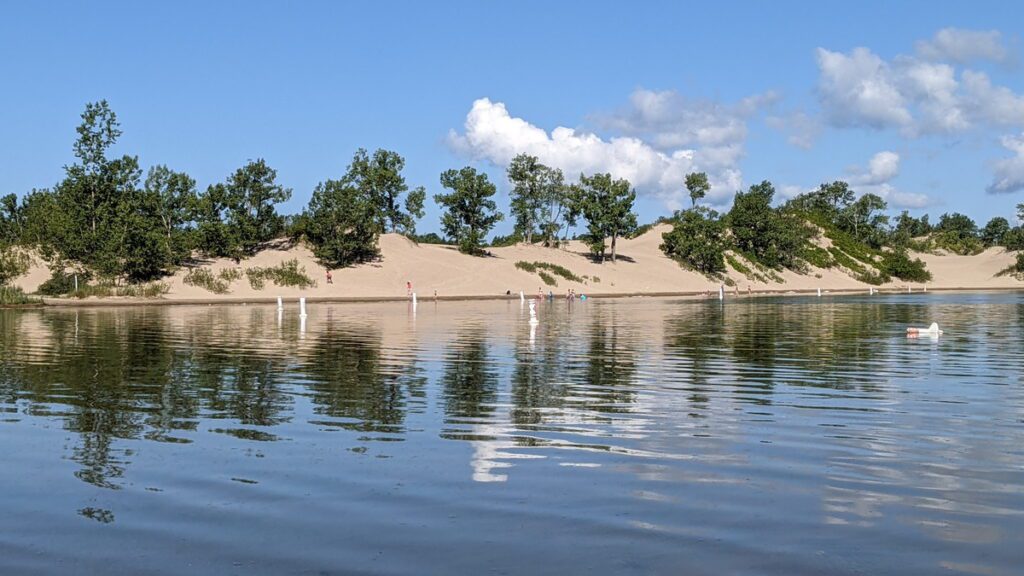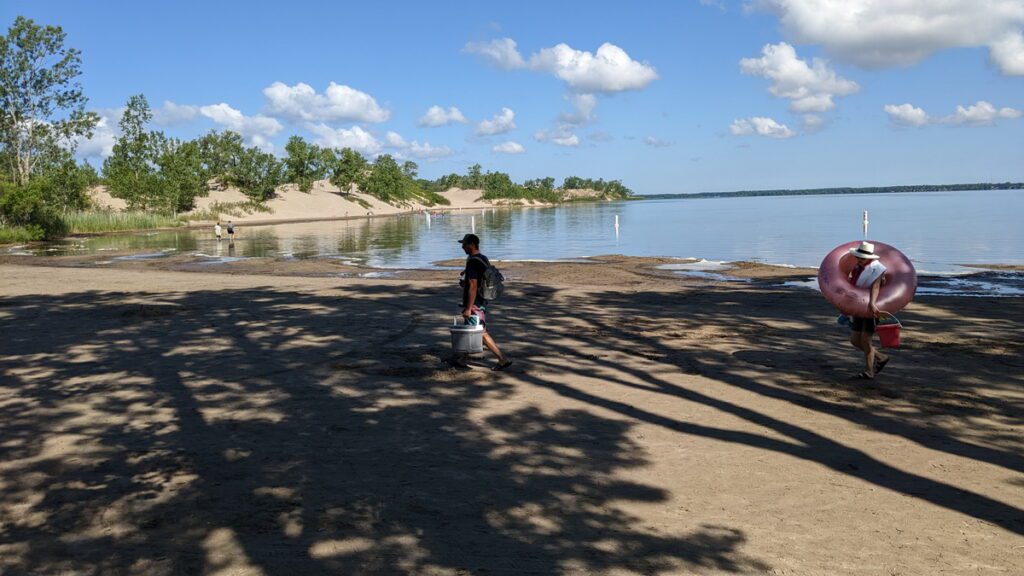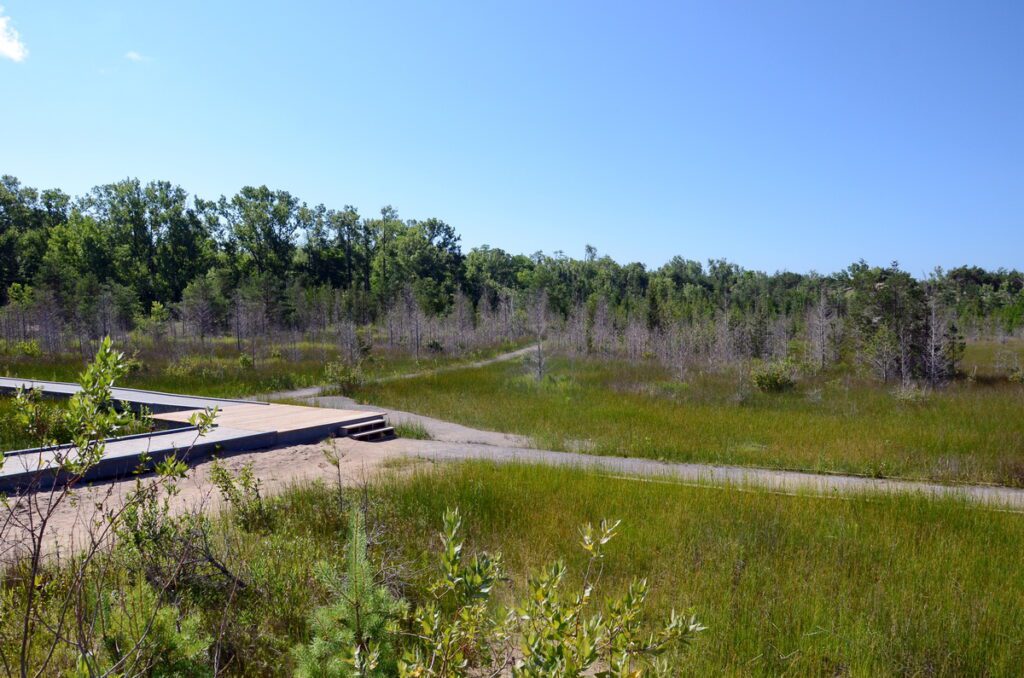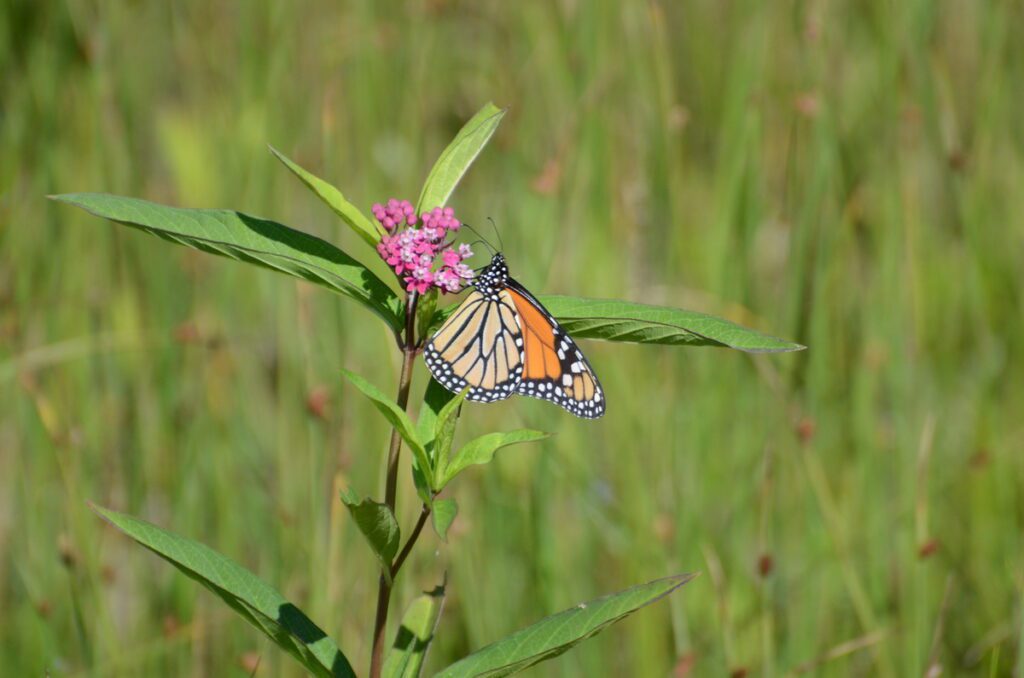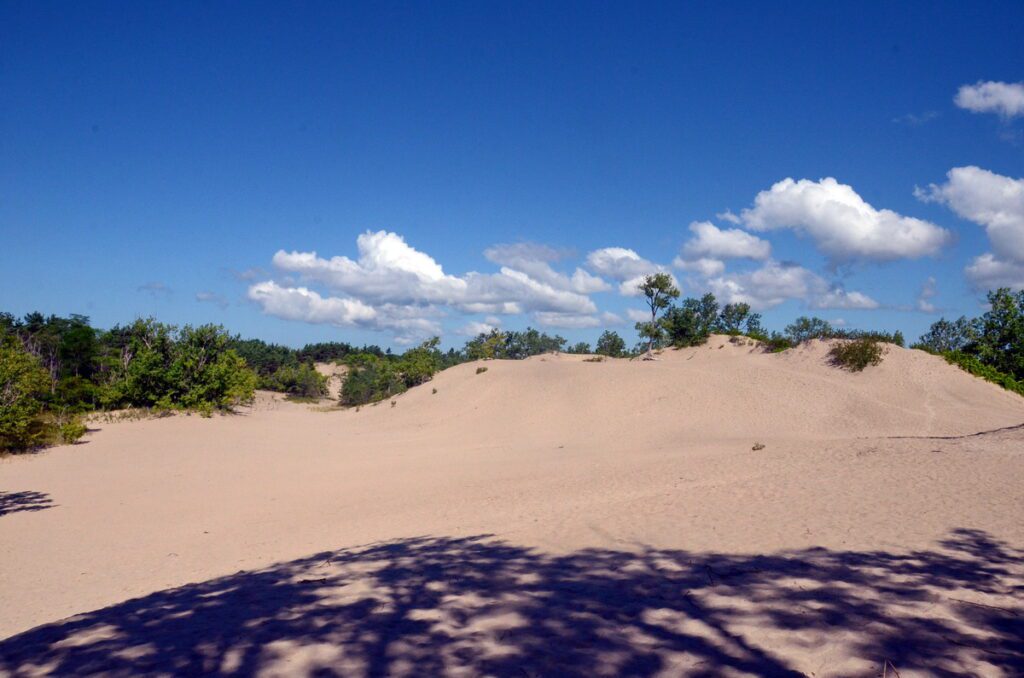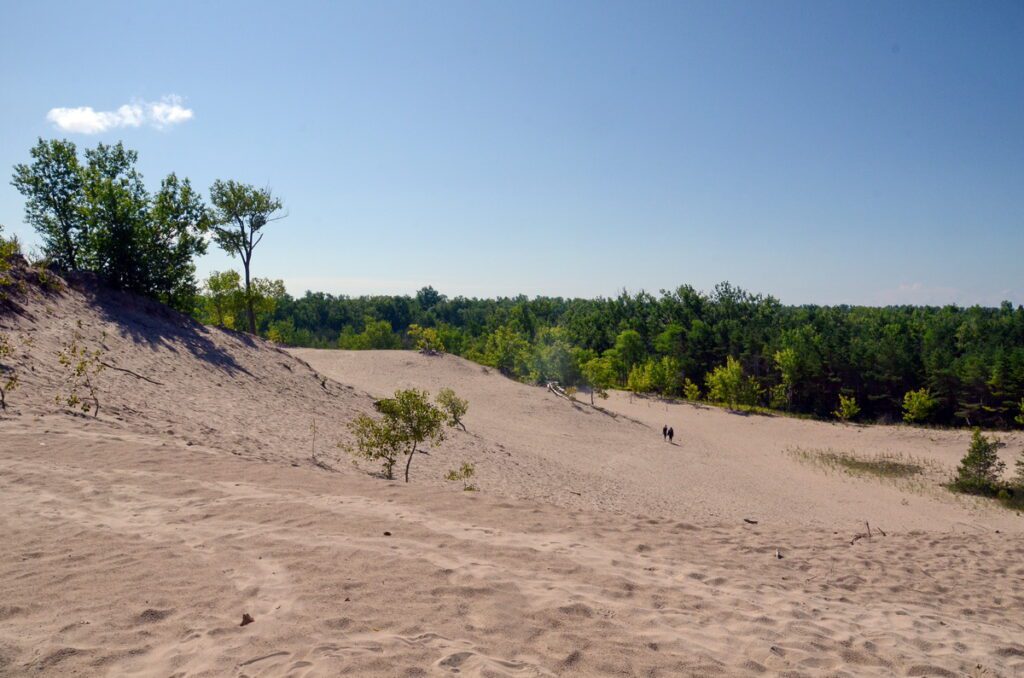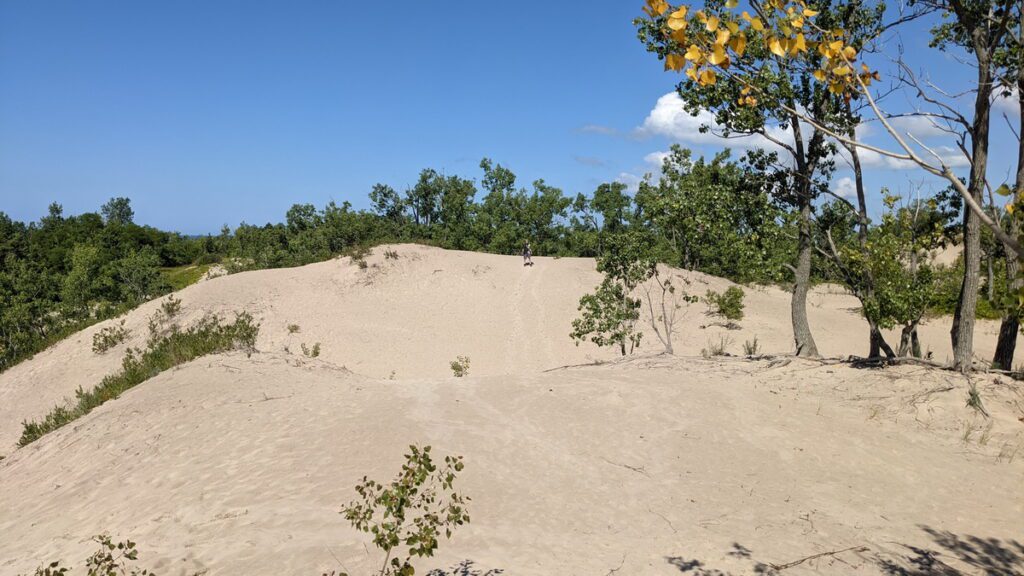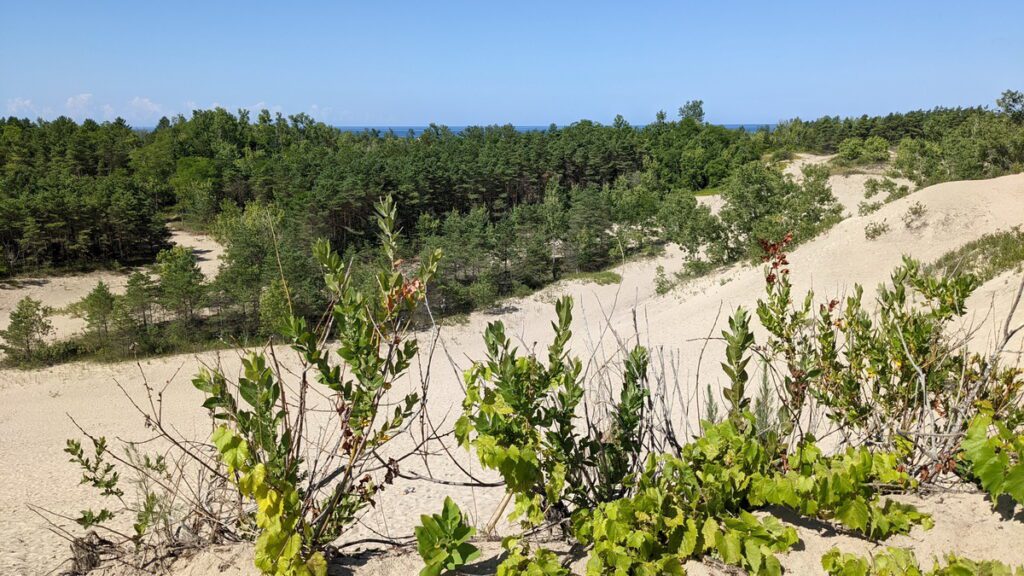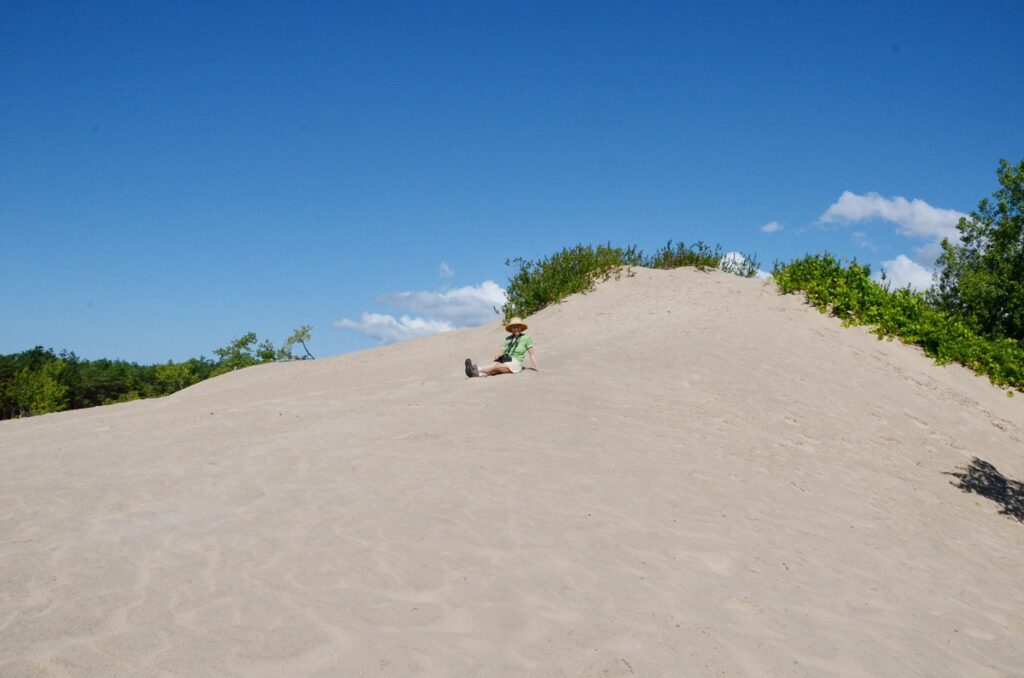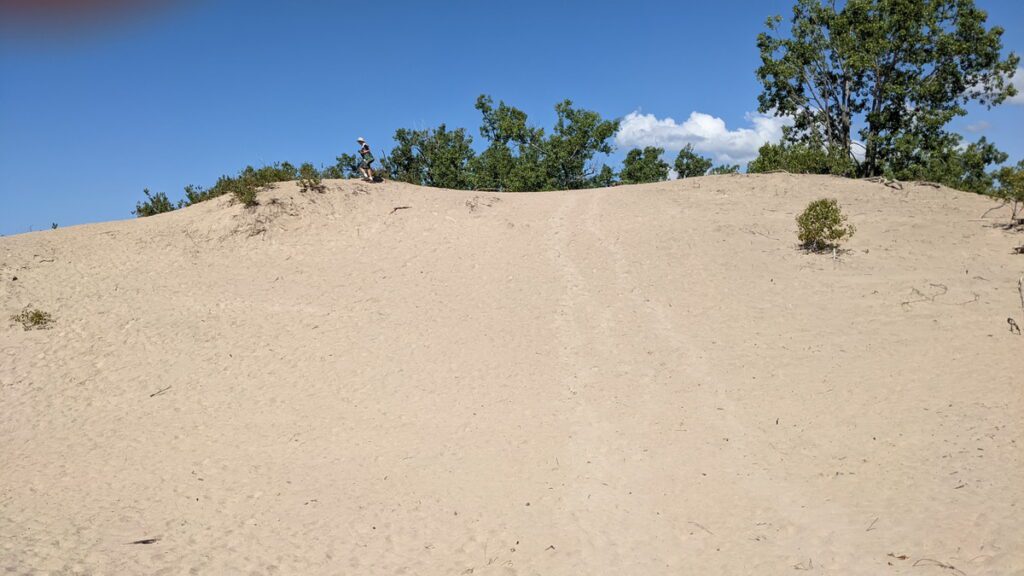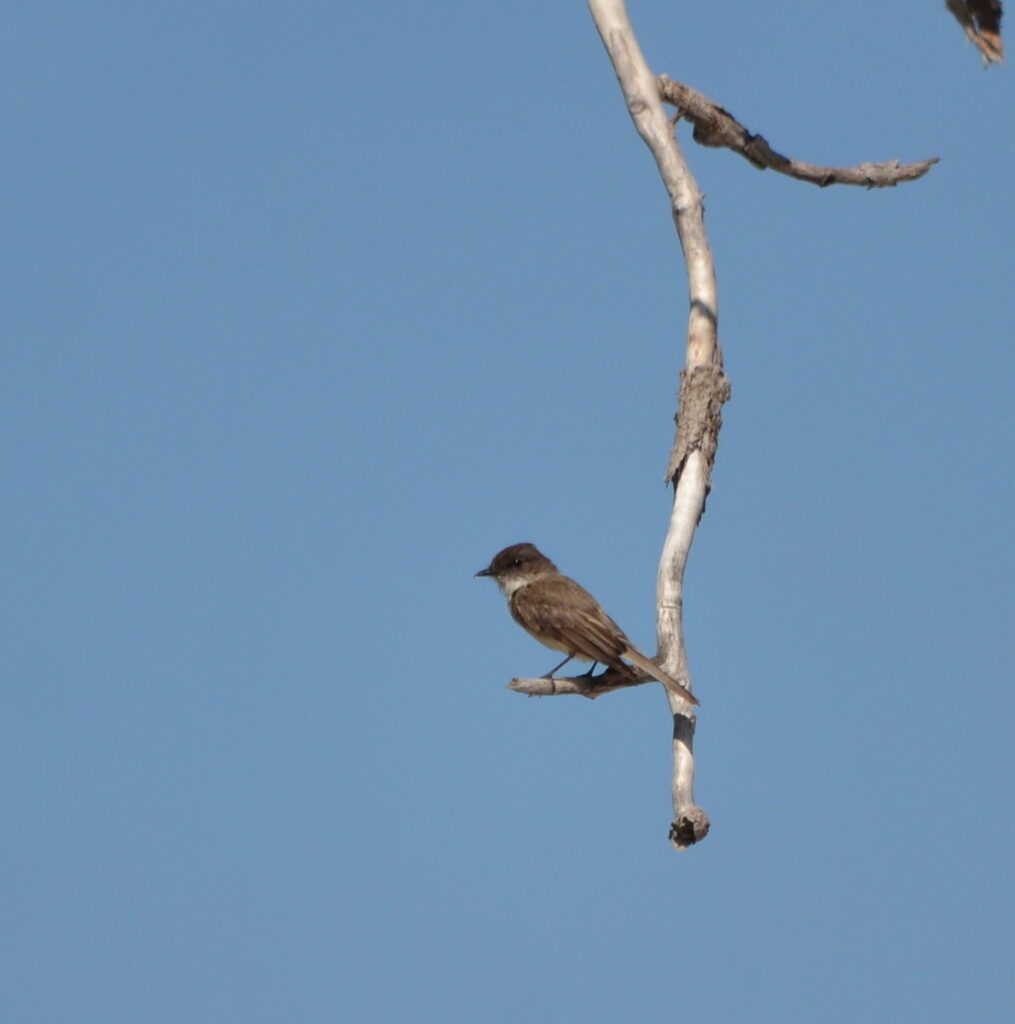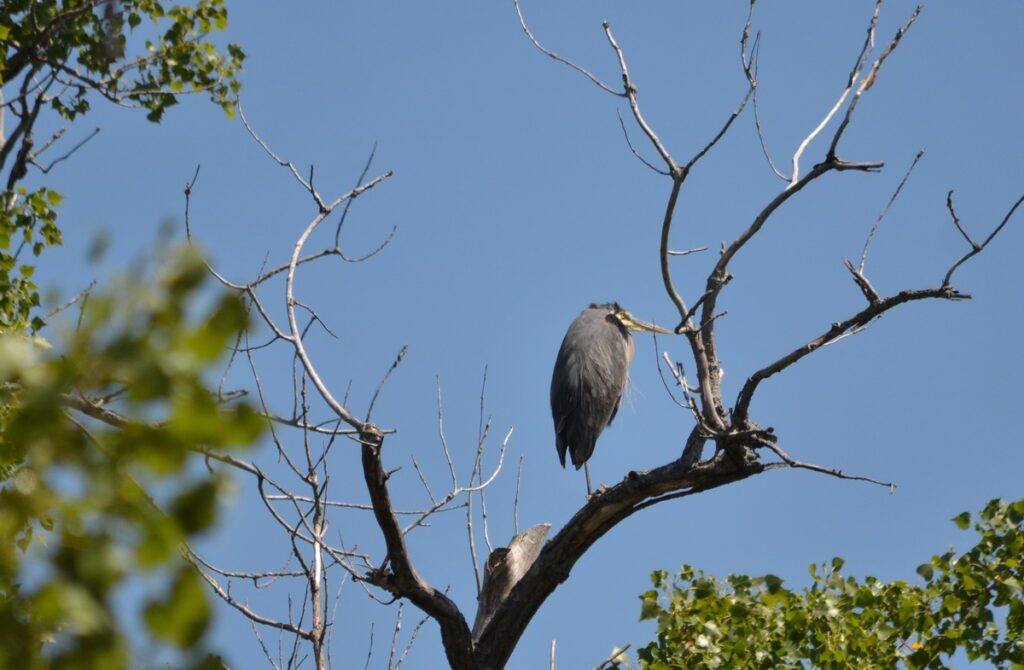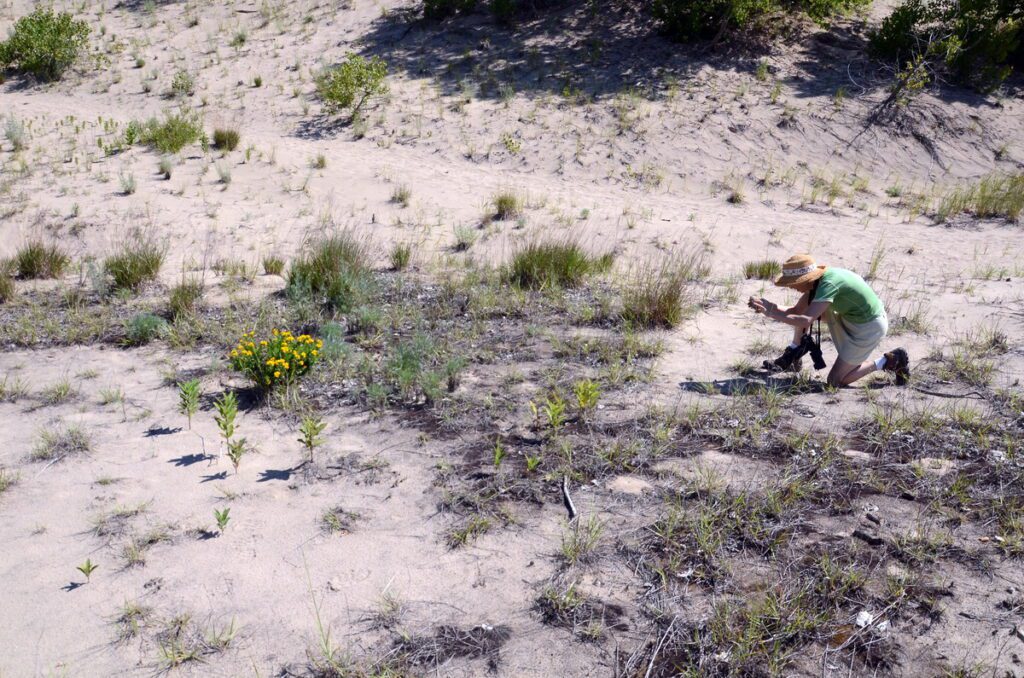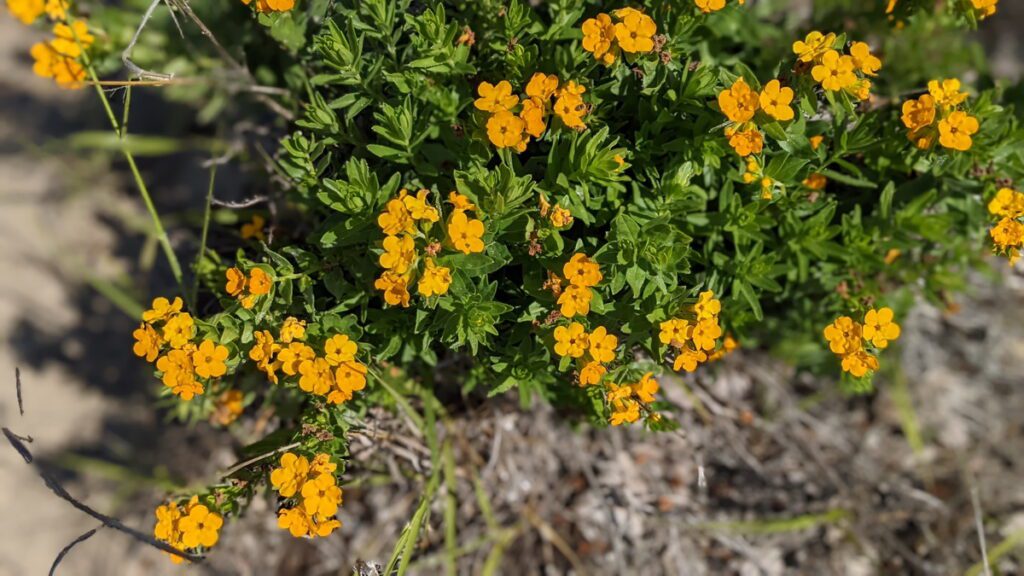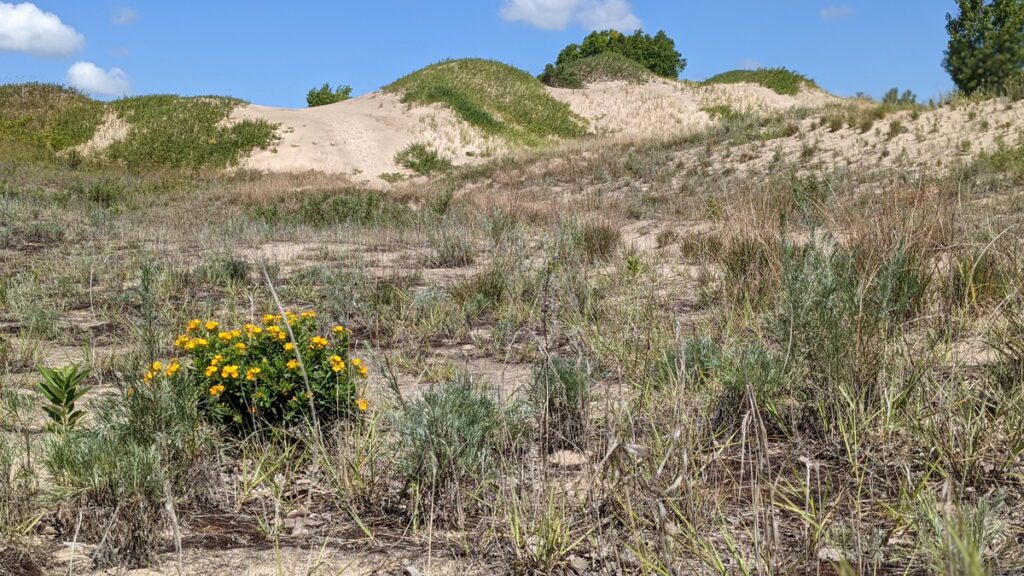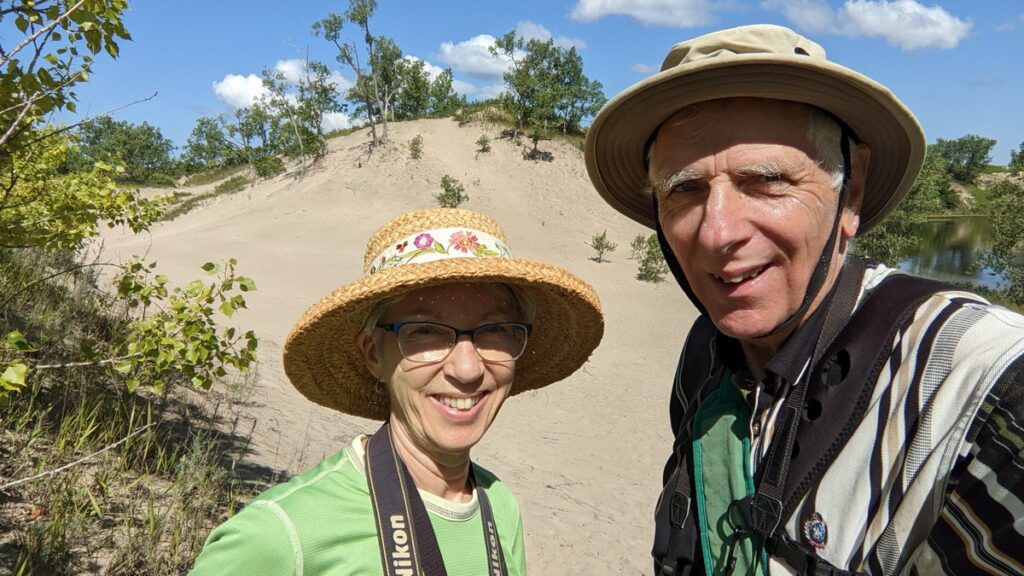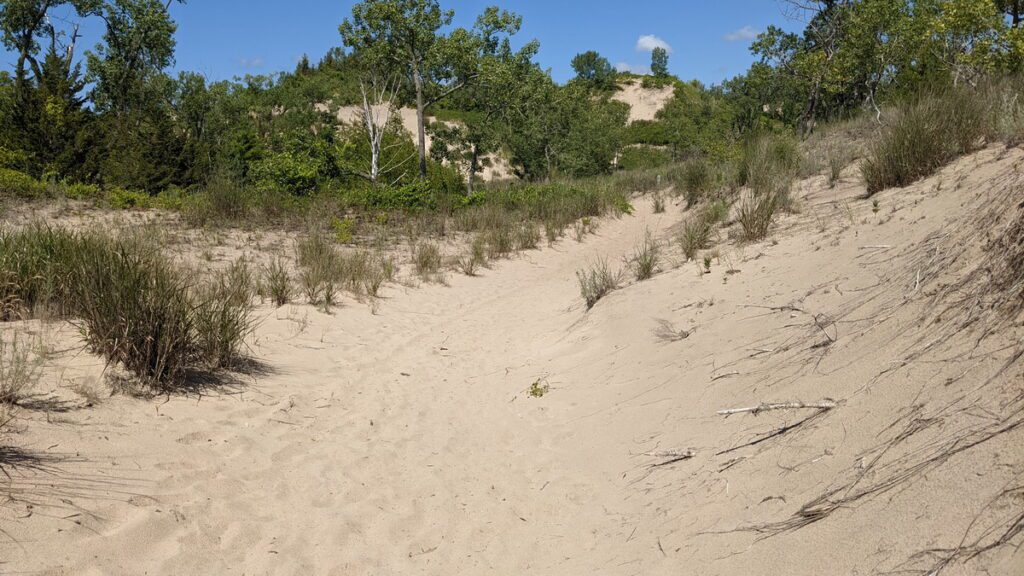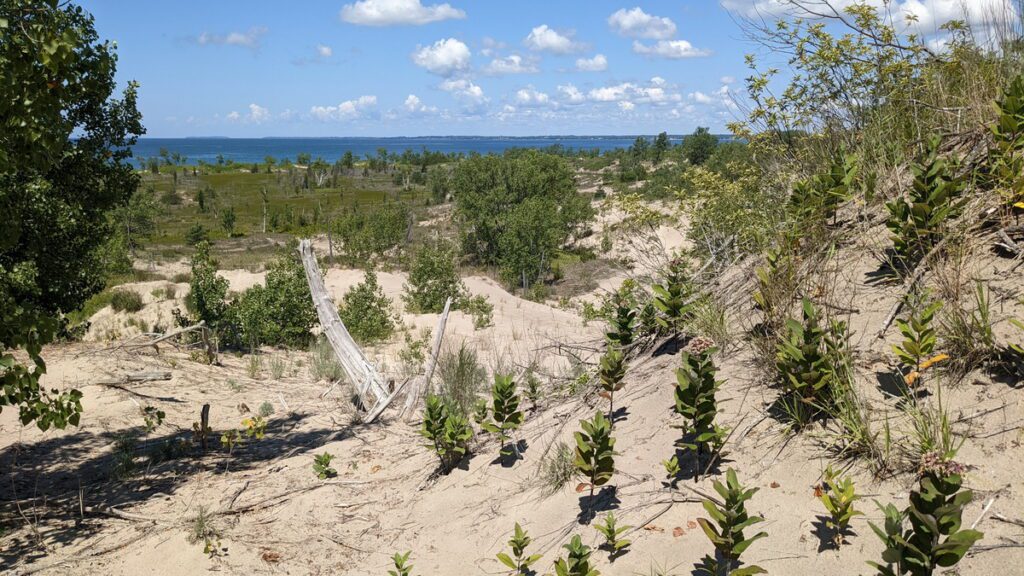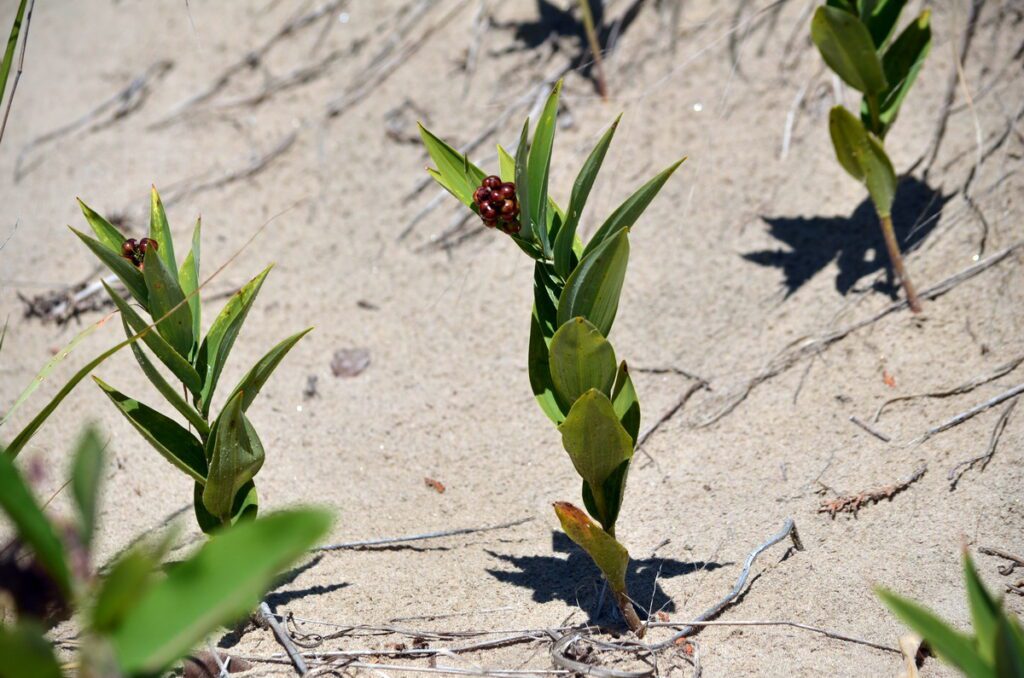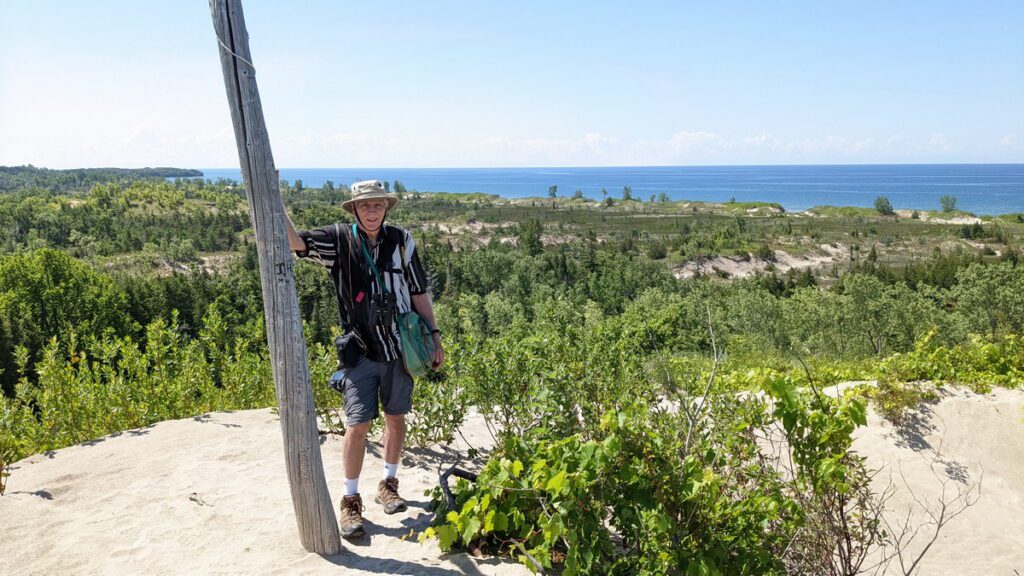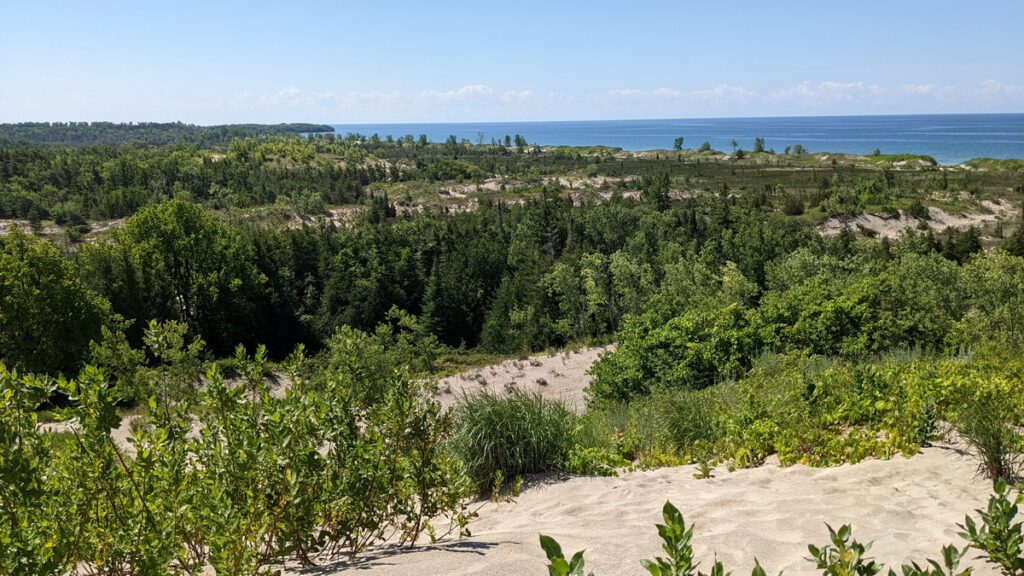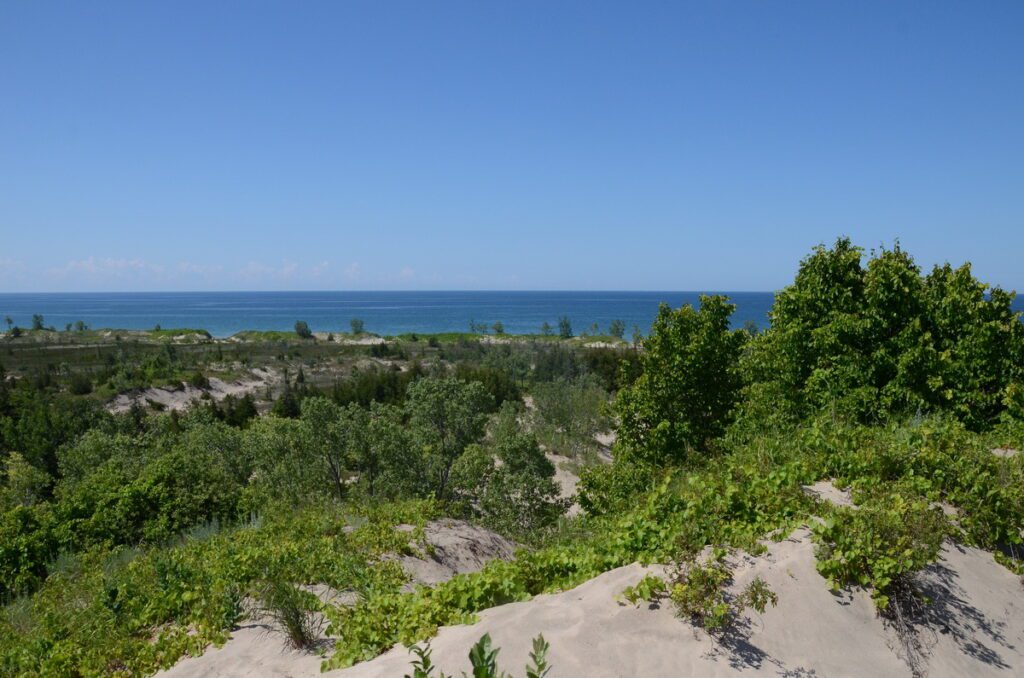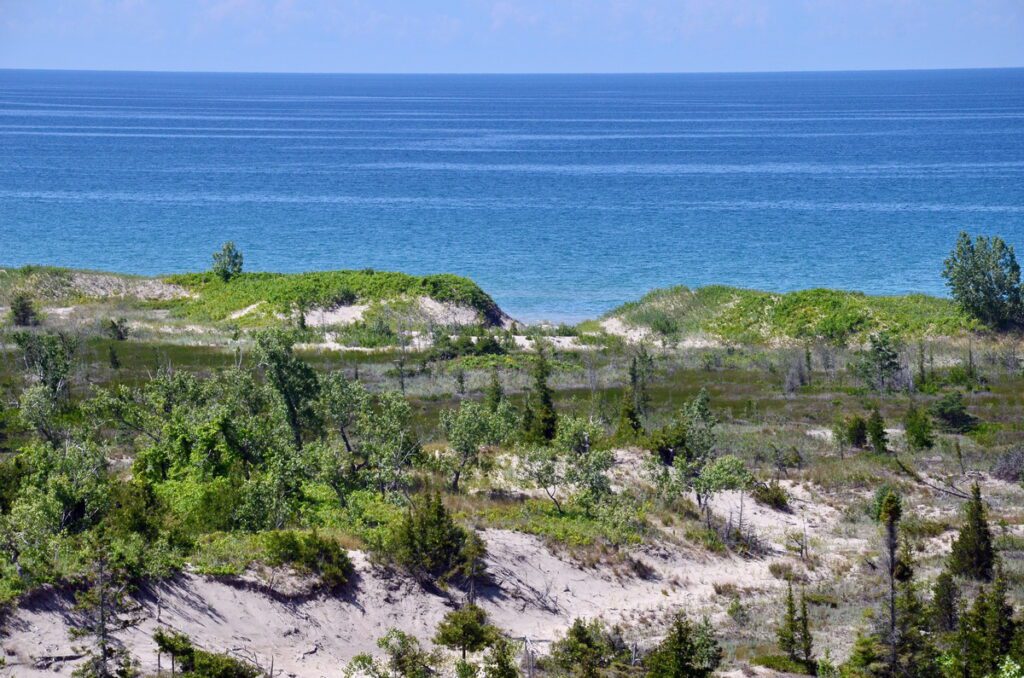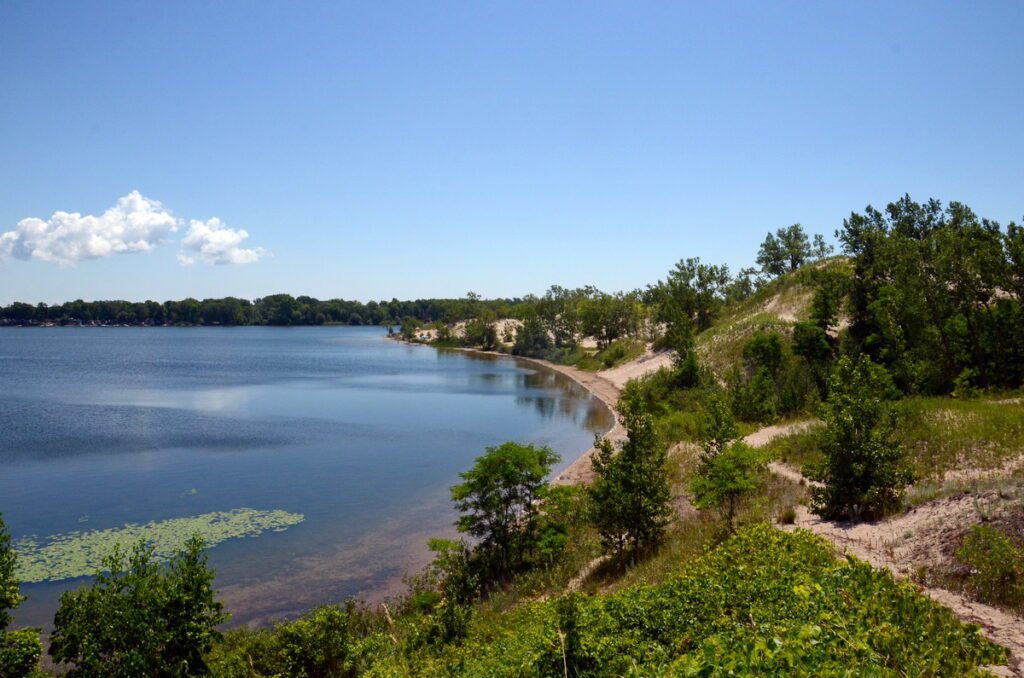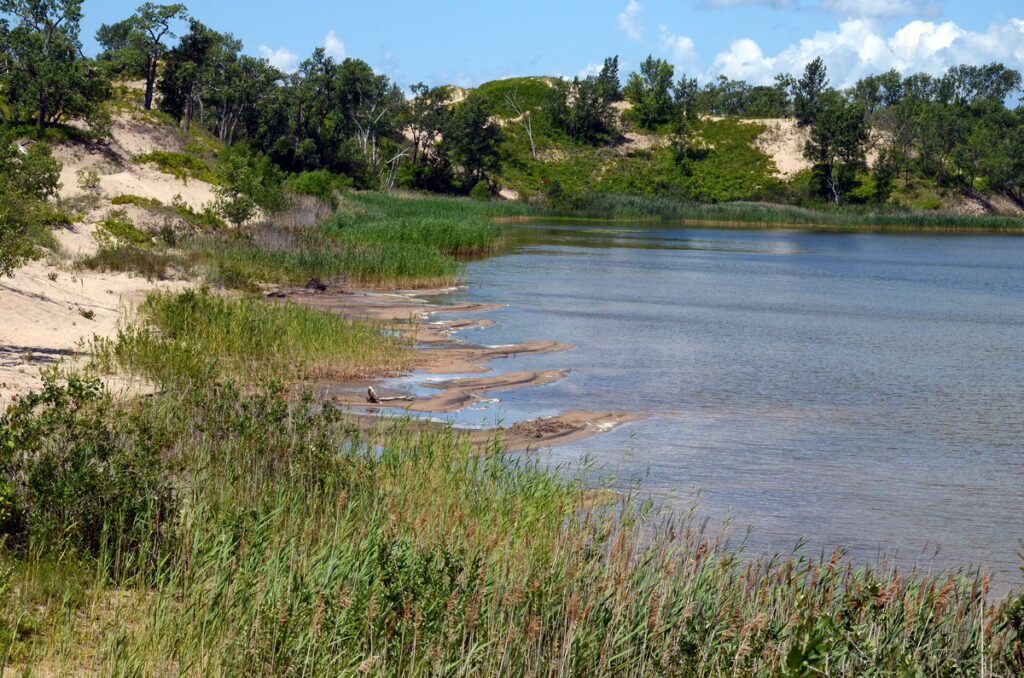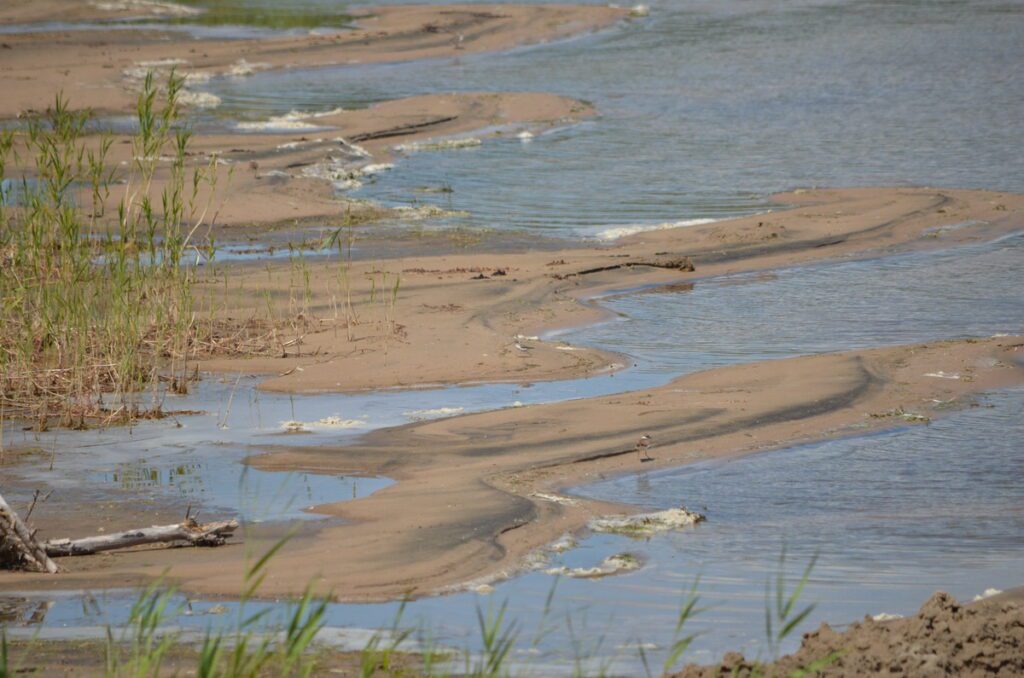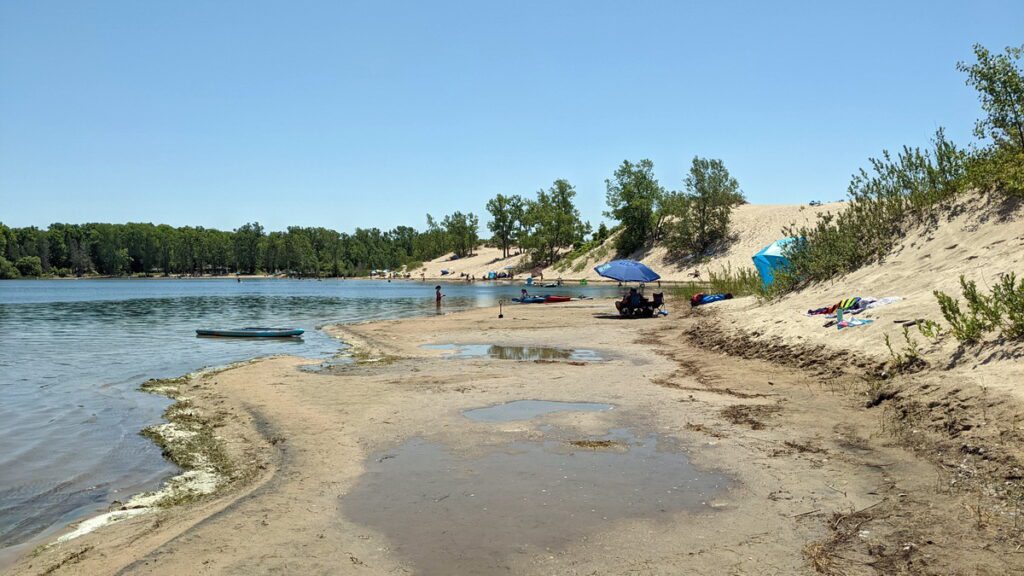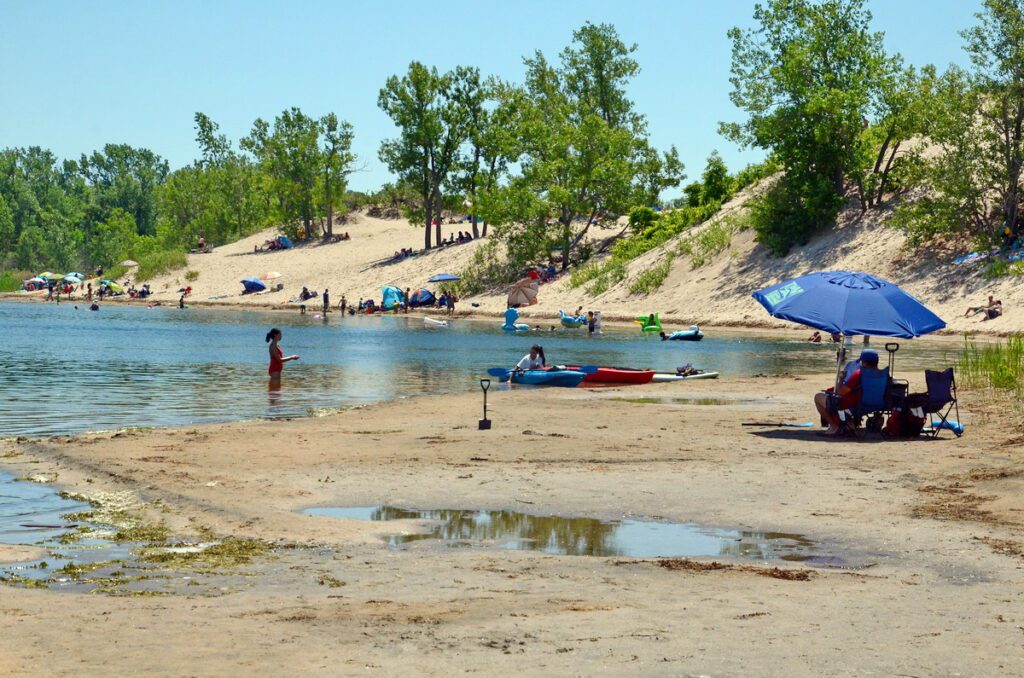Dusty in the Dunes of Sandbanks Provincial Park
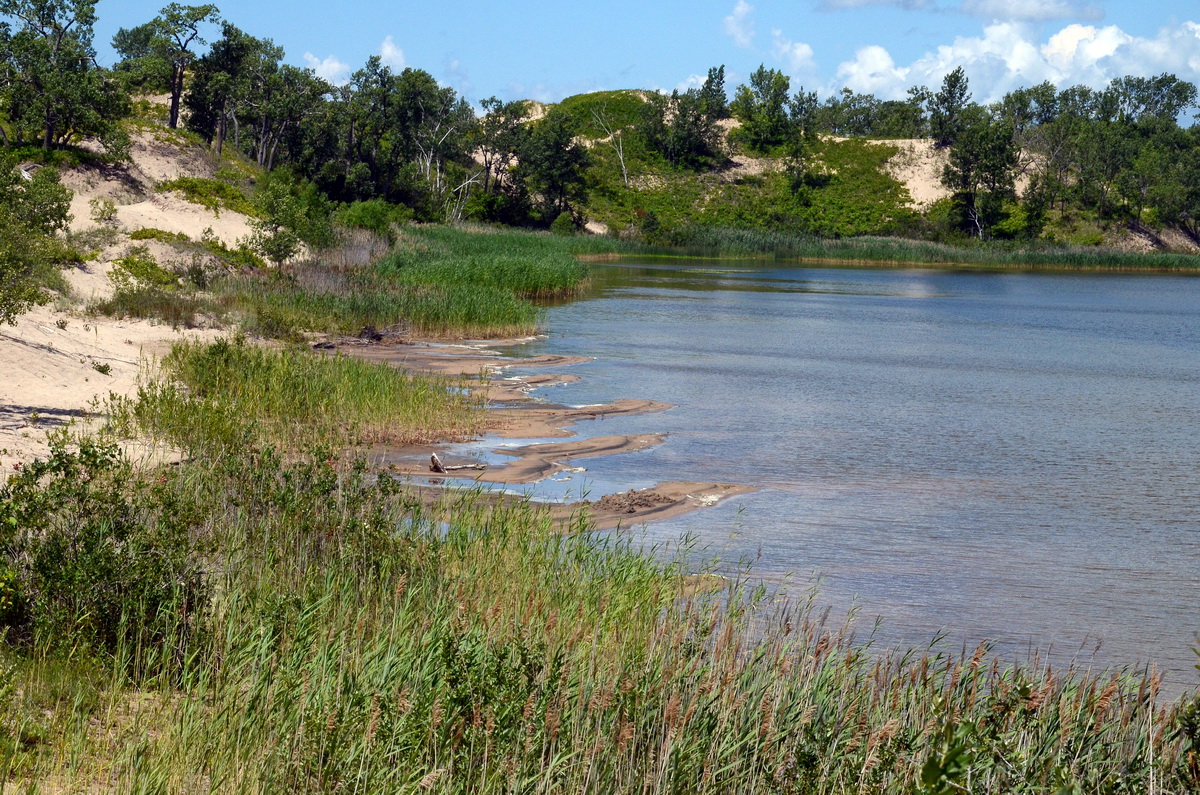
Sandbanks Provincial Park is a park in Ontario known for its sand dunes and sandy beaches. Late the afternoon before our planned hike in the dunes, Bob had taken a quick peak at the dune system from Dunes Beach.
On the morning set aside for exploring the dunes, we arrived in the Dunes Beach parking lot shortly after 9 a.m. I was impressed by my first view of the dunes on the far side of the crescent-shaped beach.
It was going to be a very hot July day, so some people were cooling off in the water of West Lake at Sandbanks Provincial Park even at that hour. Other campers and visitors to the Park were staking a claim for a spot on the popular beach.
Bob and I were anxious to get among the dunes. A short section of boardwalk conveyed us to the edge of a panne. From there, a dirt trail led to the start of the dune system.
A Monarch Butterfly caught our eye as it winged its way to a stalk of bright pink Swamp Milkweed and began nectaring.
Sandbanks Provincial Park is nestled along the shores of Lake Ontario at the southern tip of Prince Edward County. It is home to the world’s largest freshwater baymouth barrier dune formation.
Bob and I had no idea what lay ahead of us. Even as we looked out over the sprawling mounds of white sand, we took note of these tracks left by some bird earlier that morning.
The dune formations of Prince Edward County were formed by glaciers during the last ice age some 12,500 years ago.
After the glaciers receded, huge forces of nature continued to shape this landscape, but it was European settlers who deforested the dune system when they arrived. They tried to mold the landscape to make it suitable for farming and a growing village.
What they failed to realize was that the forces of wind and water can cause sand dunes to drift when they are destabilized. At this location, the sand dunes drifted inland and increased in size.
By 1881, the natural shifting of the dunes buried West Point Road under 98 feet of sand and soon engulfed the village of Athol. By 1921, the government stepped in and launched a massive reforestation project to anchor the dunes and preserve them for future generations.
We were grateful that Carolinian forest was recreated and native plants reintroduced on the dunes so long ago, now giving Bob and I the opportunity to explore the seductive formations.
We already recognized that there was some serious climbing ahead of us. Some of the dunes achieve heights of 82 feet.
Scaling the dunes took a lot of energy and was time-consuming because of slippage in the silky sand.
Under the blazing sun, we didn’t expect to see much wildlife, but then an Eastern Phoebe came out of nowhere hawking for insects.
Further on, a Great Blue Heron was perched high in a tree overlooking the shore of West Lake.
I was especially pleased to find a pocket of native plants blooming in that dune habitat.
This Hairy Puccoon was a plant new to me.
One valley between the dunes, called a dune slack, was populated with several of these wildflowers sporting their vibrant yellow blossoms.
Bob and I kept pressing forward, drawn in by the sprawling beauty of the dune ridge at Sandbanks Provincial Park . It stretches 12 kilometres along the snaking shore of Lake Ontario.
After a couple of hours, we took note of one sand dune in the distance that seemed to rise higher than the others. It was still a significant distance away, but we were game to reach the top of it for a panoramic view.
As we gained elevation, Lake Ontario in the distance became visible over the tops of the low vegetation.
Another plant capturing my interest was this Star-flowered Lily-of-the-Valley. At the base of some smaller dunes, we found a small colony of these plants.
Finally, Bob and I slugged our way to the top of the targeted sand dune.
The height of the dune afforded stellar views of the surrounding landscape.
At the northwest tip of the dune system, the stretch of sand dunes between Lake Ontario and West lake is a mere 100 metres (330 feet) in width.
The sand dune system is at its widest in the southeast part of the Park at Dunes Beach. It spans a distance of 1.5 kilometres (.93 miles) between Lake Ontario and West Lake.
Over time, gravel and sand were dropped by the current of the longshore drift along that stretch of Lake Ontario’s shore. Eventually, sand bars formed and grew to close off access to two bays. Hence the terms baymouth sand bar and baymouth sand dune system.
The resulting landlocked bays became known as West Lake and East Lake. West Lake, in particular, is protected from the prevailing winds by the massive sand dunes.
After descending that highest dune, Bob and I decided to walk back to Dunes Beach along the shore. We thought it would make for easier going.
We got fooled a couple of times when the shoreline became clogged with bulrushes. Bob and I were forced to scale the adjacent dunes to circumvent the area.
As we moseyed along, there was a bevy of activity at the water’s edge below us. We managed to see several species of shorebirds, Killdeers, Least and Spotted Sandpipers, Sanderlings and Greater Yellowlegs.
The warm water of West Lake is very popular with beach goers, but there is a steep drop-off not far from shore at Dunes Beach.
After spending 3.5 hours meandering the sand dunes, it was good to be back at Dunes Beach in Sandbanks Provincial Park. Bob and I ate our lunch on a shady park bench while watching the goings-on. It had been a grand morning of exploration soon to be followed up with a hike on the designated Dunes Trail.
Frame To Frame – Bob and Jean

